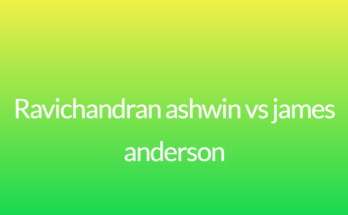Introduction:
Cricket is a popular sport played in many countries around the world. One of the key variations in cricket is the use of different colored balls – white ball and red ball cricket. These variations have different formats and are used in different types of matches. In this article, we will explore the differences between white ball and red ball cricket.
Difference between White Ball and Red Ball Cricket:
1. Appearance:
The most obvious difference between white ball and red ball cricket is the color of the ball itself. In white ball cricket, a white-colored ball is used, while in red ball cricket, a red-colored ball is used. The color of the ball affects visibility for both the batsmen and the fielders.
2. Format:
White ball cricket is usually played in limited-overs formats, such as One Day Internationals (ODIs) and Twenty20 Internationals (T20Is). These matches have a predetermined number of overs per side, typically 50 overs for ODIs and 20 overs for T20Is. Red ball cricket, on the other hand, is played in longer formats, such as Test matches. Test matches are played over a period of five days, with each team having two innings to score runs.
3. Playing Conditions:
The playing conditions also differ between white ball and red ball cricket. In white ball cricket, the matches are usually played during the day or under floodlights at night. The white ball is easier to spot under artificial lights. Red ball cricket, on the other hand, is played during the day, with natural light. The red ball is more visible against the green field and blue sky during daytime conditions.
4. Ball Movement:
The movement of the ball is another key difference between white ball and red ball cricket. In white ball cricket, due to the smooth and shiny surface of the ball, it tends to swing less compared to the red ball. Red ball cricket is known for its greater swing and movement, especially in the first few overs. This makes it challenging for the batsmen to score runs and for the bowlers to control the ball.
5. Pitch Conditions:
Pitch conditions can also vary in white ball and red ball cricket. In white ball cricket, the pitches are usually harder, flatter, and more conducive to batting. This allows for higher run-scoring opportunities and bigger shots. In contrast, red ball cricket pitches often offer more assistance to the bowlers, with variable bounce and lateral movement. This makes scoring runs more challenging.
Conclusion:
Both white ball and red ball cricket offer unique and exciting formats for players and fans alike. The use of different colored balls and variations in playing conditions create diverse challenges for teams. While white ball cricket focuses on more aggressive and explosive gameplay, red ball cricket tests the skills, patience, and endurance of players over extended periods. Whether it’s the shorter, faster-paced nature of white ball cricket or the longer, more strategic battles of red ball cricket, both formats contribute to the rich and ever-evolving world of cricket.



